Apertures Restoration Preparations at Villa Luginsland
A team of skilled workers from Poland arrived at Villa Luginsland to measure its apertures, specifically, of the buildings in the courtyard. This mark...
09 January, 2025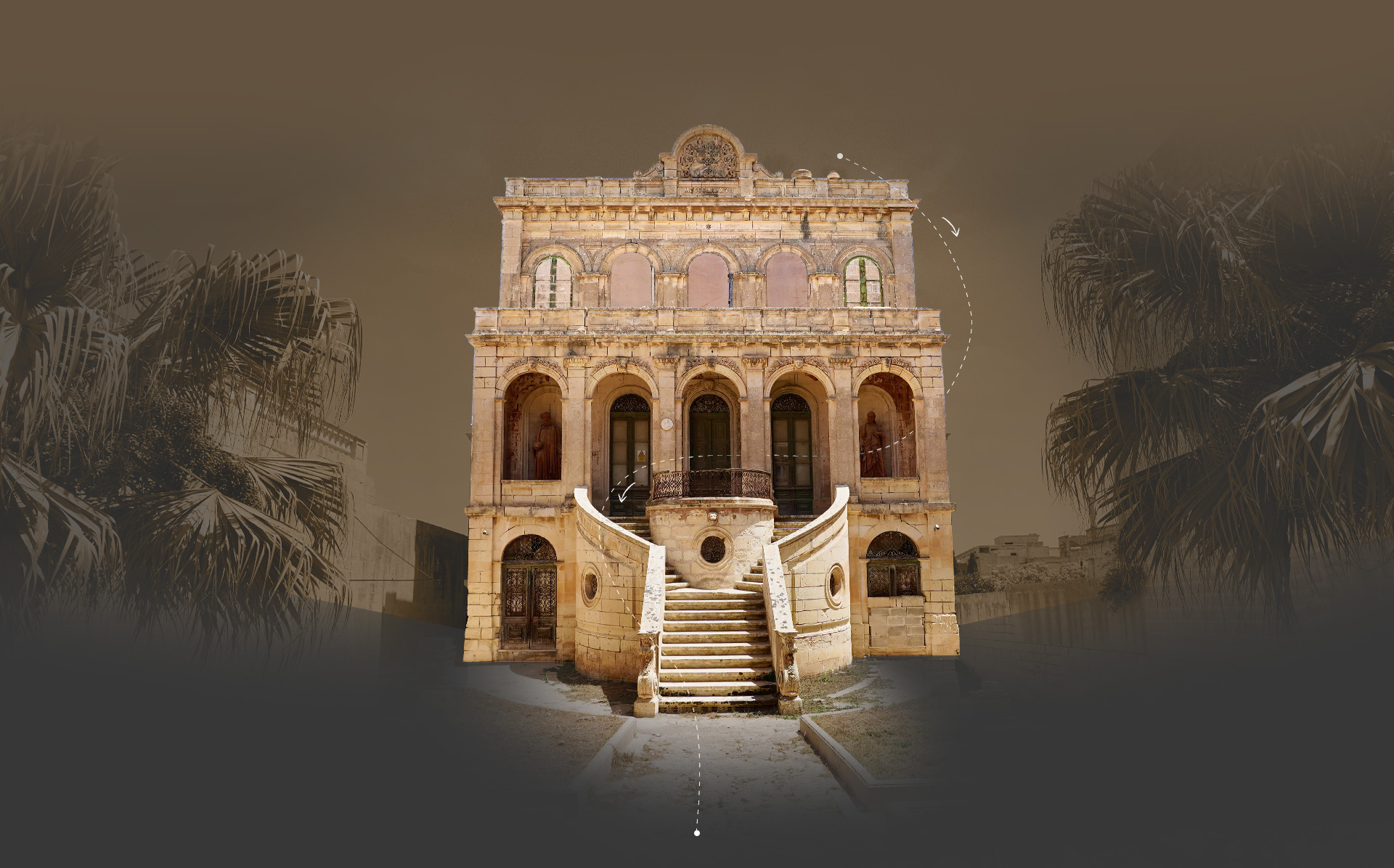

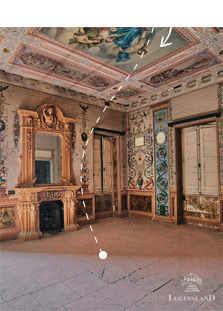
The name “Luginsland” most probably originates from the dialect spoken in the south of Germany (suddeutsch) and means “Lug ins Land”, which can be translated to the contemporary German language as “Schau ins Land”, and that means “look at the land/country”.
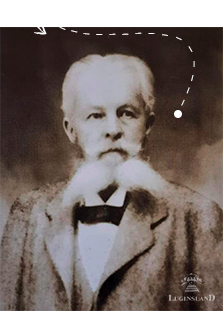
The documented roots of the Tucher family date back to the 14th century. The first mention of the name found in the chronicle of the city of Nuremberg comes from the year 1309. The chronicle describes the founder of the House, Bertold Tucher, as a noble merchant (patrician), citizen and member of the City Council of Nuremberg.
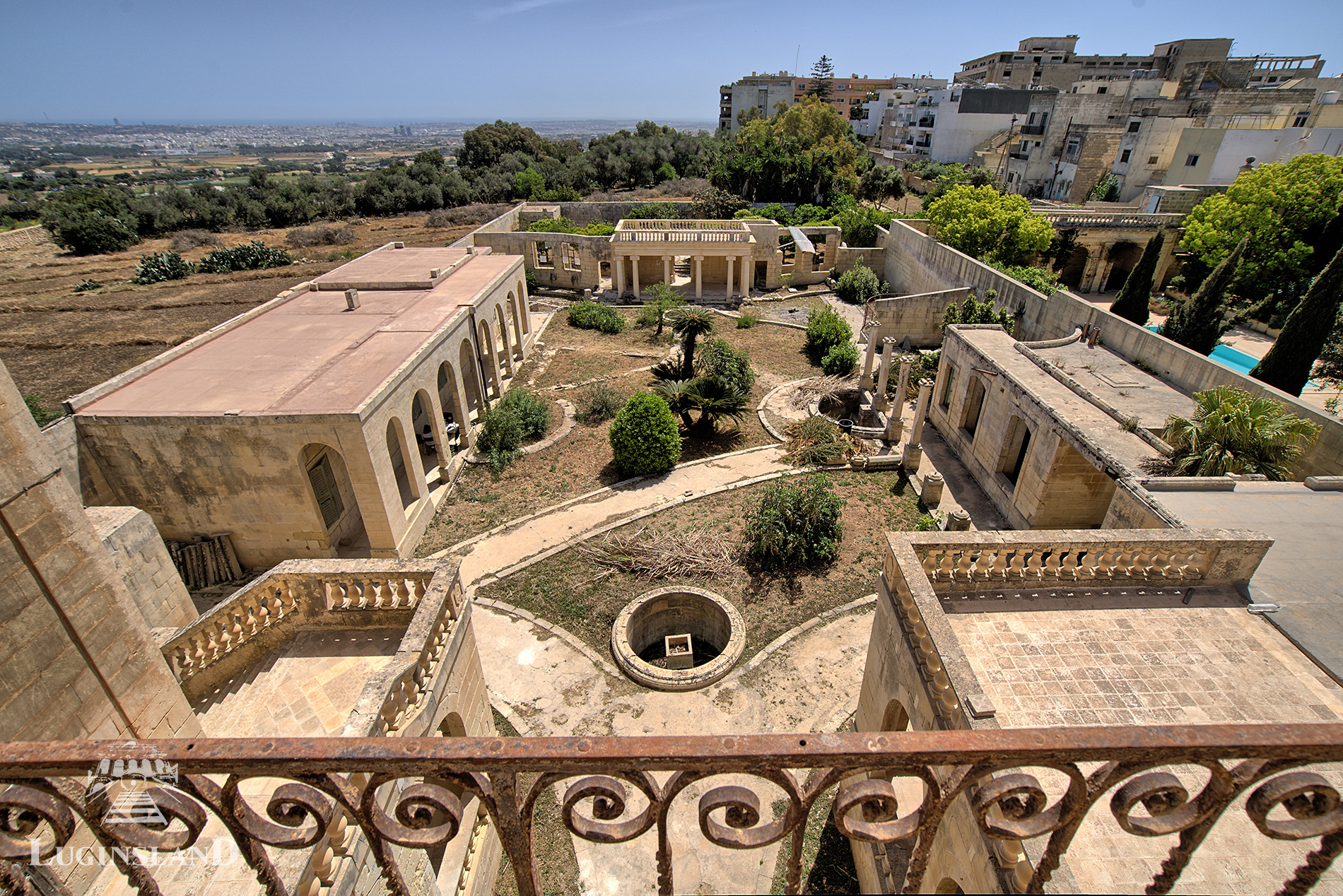
In 1996, the Luginsland estate was declared a Grade I Historic Property, i.e. a property of special cultural and historical value. It means that the property should be preserved in an unchanged original architectural form. Therefore, it is forbidden to interfere with the form, demolish or carry out alterations which would change or destroy the image of the external or internal parts of the building, as well as all of its elements.
Any works to be carried out require approvals and permits issued by the competent administrative authorities, including the local conservator. Changes in the architectural fabric are allowed only in exceptional circumstances and only on the basis of appropriate arrangements with the local conservator.
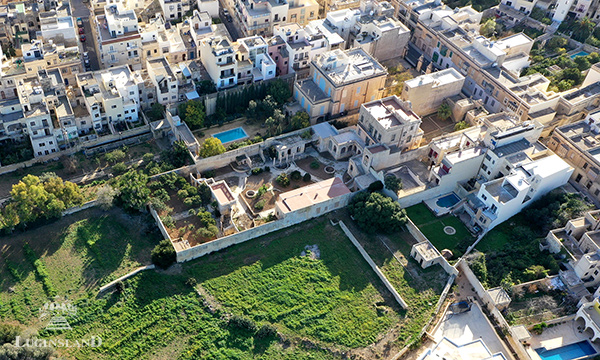
When designing the Luginsland complex, Zammit took a “temporary” break from Palladian architecture. The architecture style of Villa Luginsland is not a classicist one with “Maltese elements” and “elements of British Victorianism” but an Italian example of the Neo- Renaissance with Baroque elements. The style of Villa Luginsland does not correspond with any other residential property project by Zammit, in fact, it is significantly different and exceptional. This observation has made us believe that it may have been the baron himself to work on and contribute to the project.
According to research conducted by Dominika Rostocka, a Polish architect who is responsible for the historical analysis of the villa, there are multiple correlations and hidden messages in the design and decoration of the building, none of which have been discovered before.
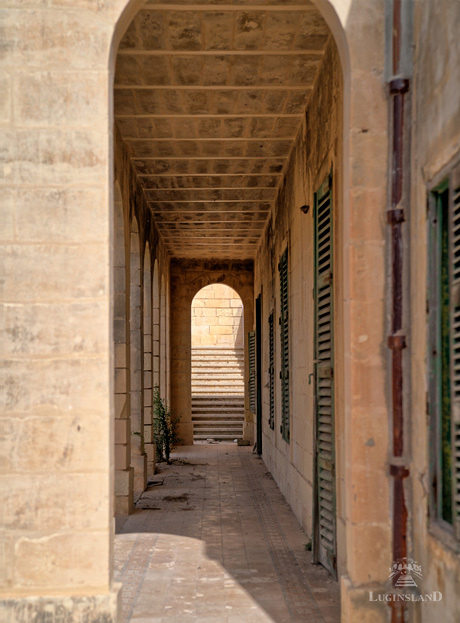
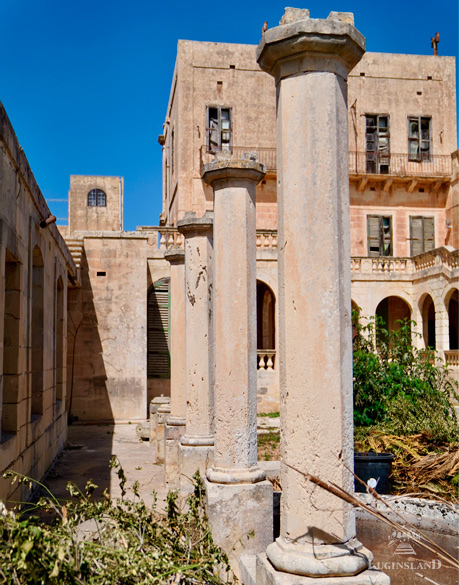
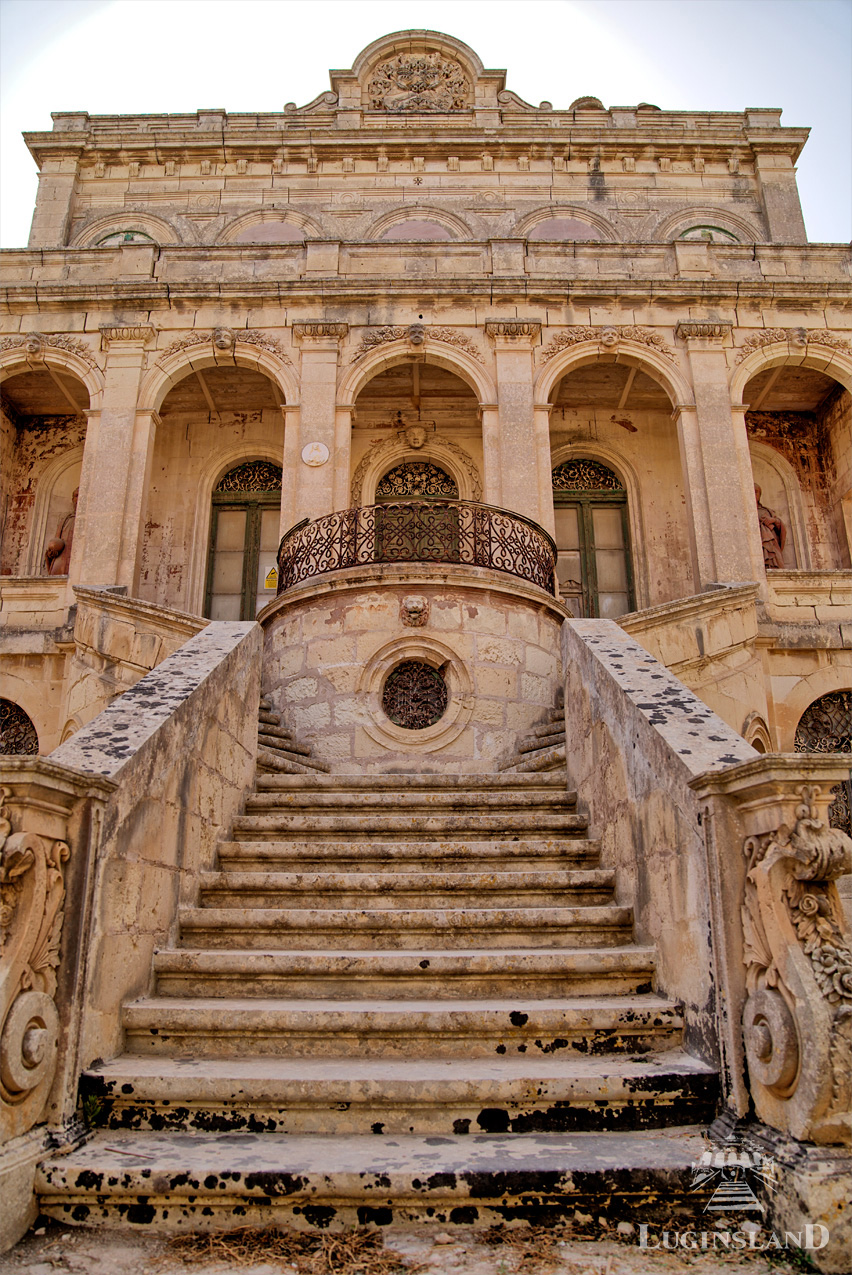
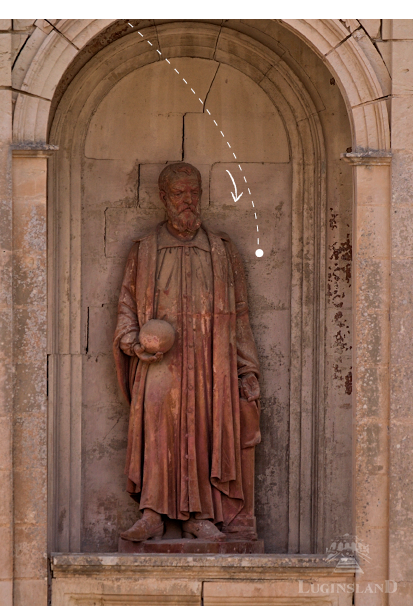
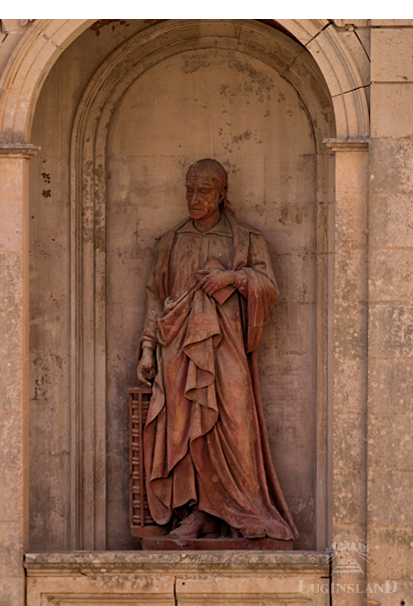
Upon entering the property, a gorgeous monumental stairway leading to the main entrance can be seen. On both sides of the entrance door, hidden in the shadow, there are two terracotta sculptures of notable Italian scientists: Galileo di Vincenzo Bonaiuti de’ Galilei and Alessandro Volta.
Galileo, the father of observational astronomy, modern physics and modern science, was born on 15 February 1564 and died on 8 January 1642 in Arcerti. He was an Italian astronomer, mathematician, engineer and philosopher. He formulated the basis for experimental mathematical research methods in natural sciences, studied velocity, gravity, free fall and projectile motion as well as applied science and technology describing the properties of pendulums and “hydrostatic balances”. He invented the thermoscope and various military compasses and used the telescope for scientific observations of celestial objects. Looking at Galileo’s sculpture, we can notice books lying at his feet: it is the work of Nicolaus Copernicus!
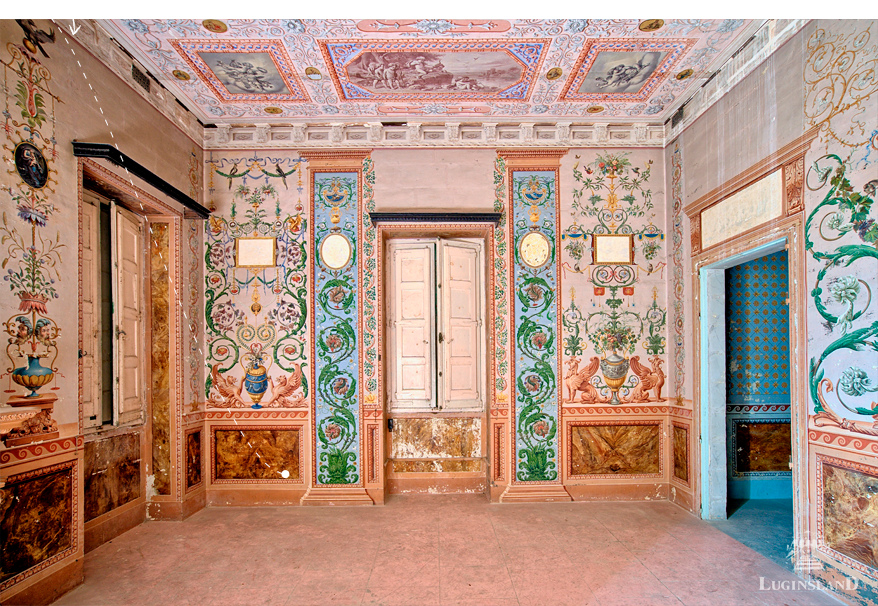
The interiors of the residence (on the first floor, the ceiling in the bedroom on the second floor) are decorated with polychrome paintings by Giuseppe Cali, one of the best Maltese artists of the late nineteenth and early twentieth century. The wall paintings are a display of Cali’s mastery. The detail and realism, the courage of colour, the ability to obtain the depth of image and chiaroscuro (painting illusion) are all exquisite examples of the artist’s craft. The polychromatic wall paintings themselves are quite possibly freestyle and perhaps the author’s own interpretation of the 18th and 19th century decorative ornamentation.
The decorations on the first floor do not follow any rhythm or chronology which is typical of the Vatican Arcades or the arcades of the City Hall in Florence. It is rational to make an assumption that two people worked on the wall paintings, because a slight difference in style can be observed. However, it was not possible to prove the theory as no such information could be obtained.
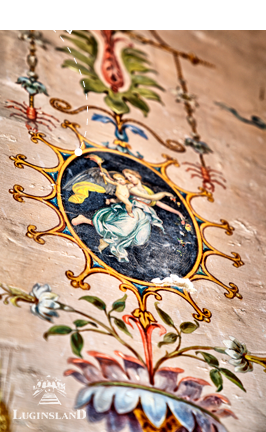
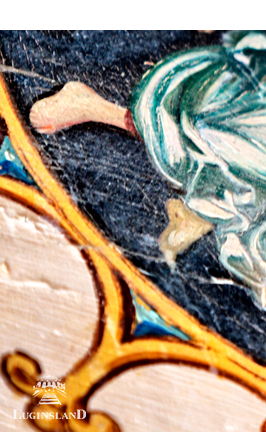
Giuseppe Cali – born on August 14, 1846 in Valletta to a Neapolitan family which settled in Malta. From early years, he was interested in painting and showed great talent. He graduated from the famous Academy of Fine Arts in Naples (Accademia delle Belle Arti).
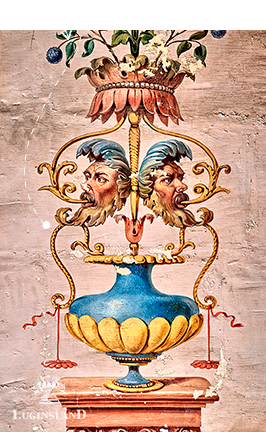
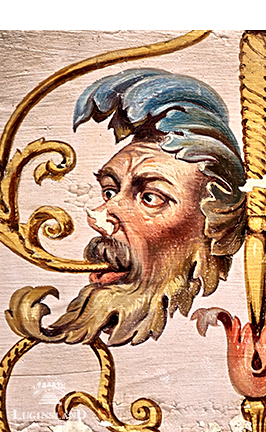
Grotesque – a floral ornament first used in ancient times. Grotesques consist of plant garlands interlaced with other elements such as human figures, animals, armaments, paintings, fruits and others. Instead of garlands, grotesques can also take advantage of an ornament…
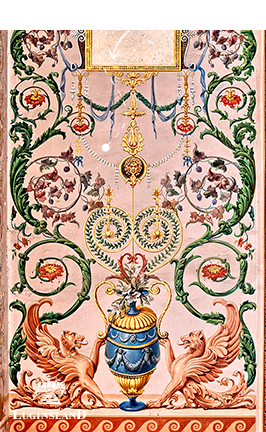
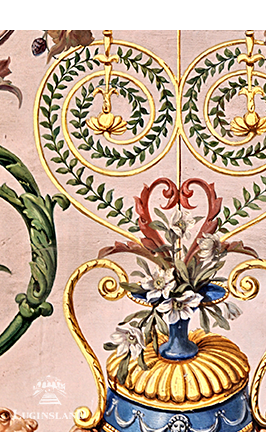
Arabesque – an ornament derived from ancient Greco-Roman art. It is a form of artistic decoration consisting of a plant ornament in the form of stylized plant garlands, often accompanied by additional elements (e.g. elements of armour, fruit, human figures).

Beauty, art and architecture lie at the core of our ethics. We are a team of passionate professionals who seek to rediscover what has been forgotten, fix what has been broken and bring back the light that has fainted. We believe that together we can build a better future for the coming generations while holding our history in the highest regard.
Our mission is to renovate and revitalise unique historic buildings to restore their former glory and splendor. ‘Primum non nocere’ is one of the fundamental principles in medicine, and after over a year of working on restoration projects, we have come to realise that this maxim applies to architecture just as much as it does to medicine.

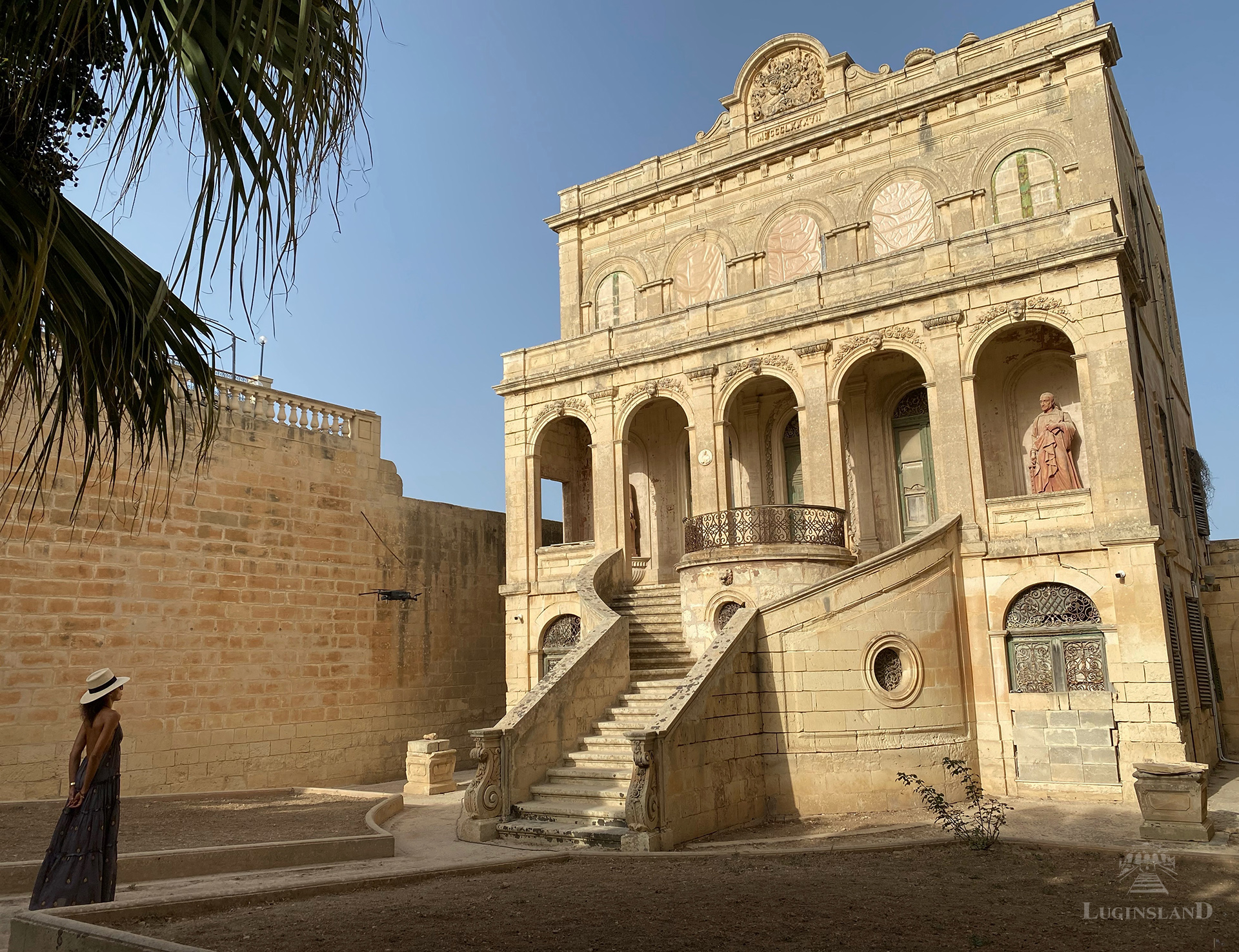
Boris Kudlička is a Slovak set designer who has played a crucial role in the theatre industry for the last two decades. He studied set design at the Academy of Performing Arts, Bratislava, and the Minerva Art Academy, Groningen. He regularly collaborates with director Mariusz Treliński, with whom he created the following: Tristan und Isolde (Metropolitan Opera, New York), Iolanta (Metropolitan Opera, Maggio Musicale, Florence), Duke Bluebeard’s Castle (Metropolitan Opera, Polish National Opera), The Fiery Angel (Polish National Opera, Aix-en-Provence Opera Festival)…

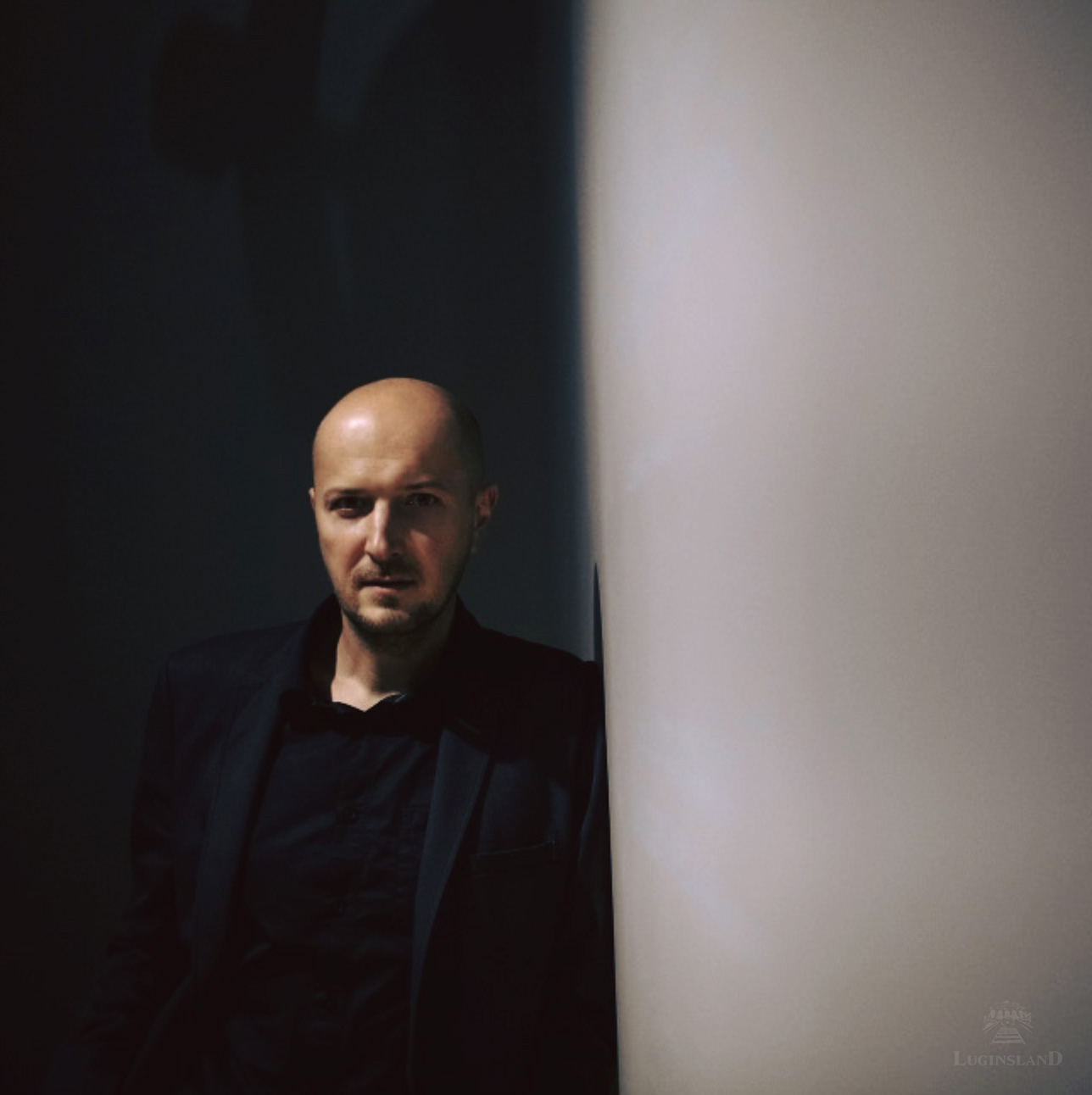
A team of skilled workers from Poland arrived at Villa Luginsland to measure its apertures, specifically, of the buildings in the courtyard. This mark...
09 January, 2025During the preliminary analysis of the Villa's potential, we closely examined rooms adorned with murals. The best-preserved frescoes are situated on t...
02 January, 2024
